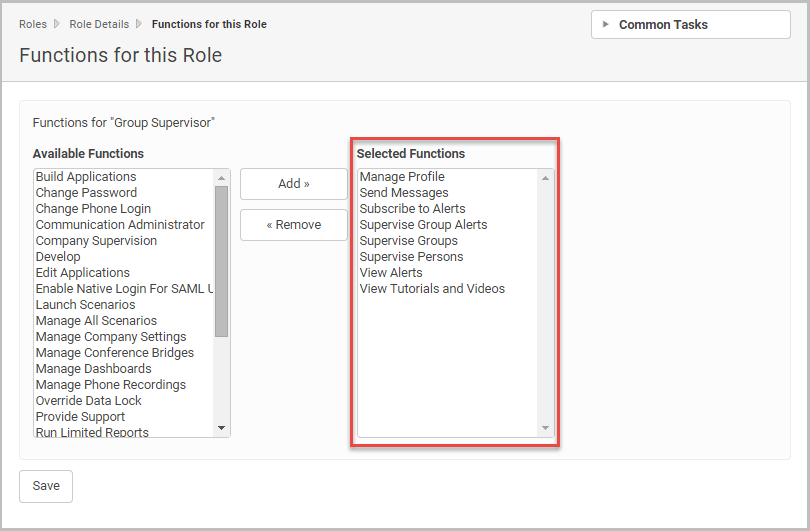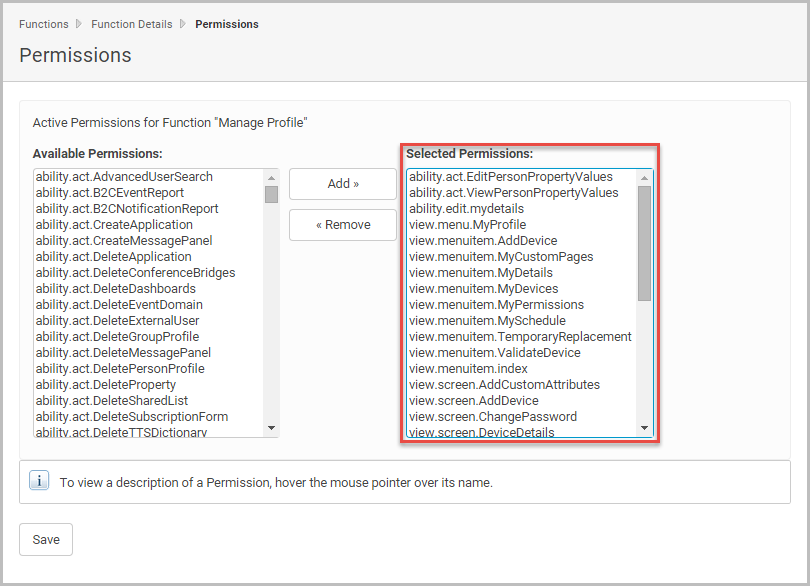Product Permissions
The basic principles of product permissions and how they relate to roles are:
- Permissions are used to control the features (tabs, menus, screes, etc.) that users can access in xMatters.
- Functions are combinations of specific product permissions.
- Roles are combinations of functions that also define how users can interact.
For example, a single product permission might provide a user with the ability to define their personal details; a separate permissions might allow them to view their own group memberships. The combination of these permissions, with some others, might make up a function called "Basic User". Another function, "Advanced User", might include permissions for sharing Communication Center dashboards or viewing performance reports. A role of "Manager" might then combine both sets of basic and advanced user functions.
Functions
A "function" is a name for a group of individual permissions. The Functions for this Role page lists the selected functions for the specified role.
- Click the Admin tab.
- On the Permissions menu, click Roles.
- Click the name of a role for which you want to view the functions.
- xMatters displays the Role Details page for the selected role.
- Click the Common Tasks drop-down menu and select Assign Functions to this Role.
- xMatters displays the Functions for this Role page.
In the example below, Group Supervisors have eight selected functions. The "Manage Profile" function permits access and the ability to change all profile information.

A list of the individual product permissions included in the Manage Profile function is available on the Permissions page.
- Click the Admin tab.
- On the Permissions menu, click Functions.
- Click the name of a function for which you want to view the permissions.
- xMatters displays the Function Details page for the selected function.
- Click the Common Tasks drop down menu and select Modify Permissions.
- xMatters displays the Permissions page for that function.
The Permissions page is where permissions for many of the very detailed elements of the xMatters interface can be selected. Elements are grouped using a dotted naming convention: ability.act, view.menu, view.menuitem, and view.screen are the most common items used to enable a feature for a user.

Move the pointer over any listed item to read a description of what the permission controls:

In this case, the "Manage Profile" function contains 24 individual permissions. The Supervise Groups function, also included in the Group Supervisor role, contains 58 individual permissions. In total, the eight functions that make up the Group Supervisor role contain a total of 168 permissions. Based on how granular dealing with individual permissions can get, you can see why xMatters uses functions to bundle sets of permissions together to support an actual use case.